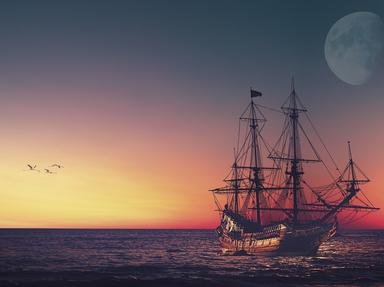Quiz Answer Key and Fun Facts
1. Poor La Salle! What profession did Rene Robert Cavelier, with the impressive title of Sieur de La Salle, pray would work? He ended up quitting at the age of 24 in 1667 after trying it for several years.
2. Poor La Salle! He was convinced he had found the mysterious Ohio River in 1669. He soon found out, however, that he was instead on the coast of the eastern-most Great Lake. Where was he?
3. Poor La Salle! He spent much of the 1670s searching for the mouth of the Mississippi River. He never found it during his time around the Great Lakes and Canada. He did, however, succeed in his involvement in the fur trade of that region. What animal was primarily providing the pelts for this trade?
4. Poor La Salle! He was very excited, in the early 1680s to have finally traveled south on the Mississippi River toward its end. Before he left, he named the area "La Louisiane" in honor of the Sun King. Who was this king?
5. Poor La Salle! He set sail with four ships from France in 1684. His plan was to land at the mouth of the Mississippi from the Gulf of Mexico and build a large fort for his country. He arrived at the Gulf with few men and three damaged ships. What had happened during this voyage?
6. Poor La Salle! His remaining three ships sailed through the Gulf. La Salle did not recognize any of the landmarks he saw and accidentally sailed right past the Mississippi River Delta. Instead, they ended up in Matagorda Bay. What current Texas city is this near? (Glen Campbell would be proud)
7. Poor La Salle! As people started to die at his new settlement due to illness, malnutrition, and Native American attacks, La Salle knew he needed help from France. He sent one of his remaining ships back to Europe. On this ship, along with deserters and sick colonists, was Minet who was the group's cartographer. For what was he primarily responsible?
8. Poor La Salle! As his small colony battled the wilderness, La Salle himself spent over five months exploring the area. He still didn't find his elusive Mississippi, but did reach what river, which would later be the boundary between Mexico and the United States?
9. Poor La Salle! During one of his expeditions from the colony in his relentless quest to find the Mississippi River, almost all 23 people left behind died. What happened to these early settlers?
10. Poor La Salle! His life came to an abrupt, violent end in 1687 before he even realized his long-held dream of building a large fort on the mouth of the Mississippi River for his French nation. Who or what killed him?
Source: Author
stephgm67
This quiz was reviewed by FunTrivia editor
ponycargirl before going online.
Any errors found in FunTrivia content are routinely corrected through our feedback system.
